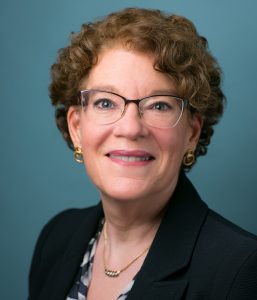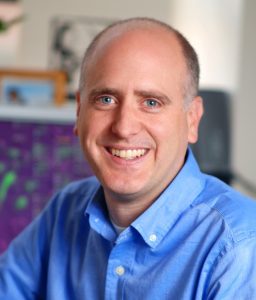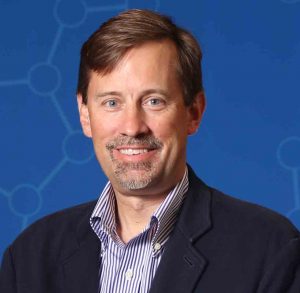Sponsored content brought to you by

Decades of accumulated knowledge on cancer have contributed to numerous advancements in diagnostics and drug discovery while simultaneously revealing the immense complexities of the disease. The unique genetic, cellular, and epigenetic compositions of tumors have challenged the development of targeted therapies and have thus necessitated the generation of precise cancer models that better recapitulate the in vivo environment.
In this GEN roundtable discussion, sponsored by the American Type Culture Collection (ATCC), the need for clinically relevant and reliable models in cancer research will be addressed. Also, under discussion will be the Human Cancer Models Initiative (HCMI), a collaborative international consortium that is generating novel, next-generation, tumor-derived culture models annotated with genomic and clinical data. ATCC is collaborating with the HCMI to offer scientists a wide variety of next-generation 2D and 3D patient-derived in vitro cancer models, including organoids.
The roundtable participants included:

Jesse Boehm, PhD, Associate Director, Broad Cancer Program, Institute Scientist, Broad Institute

Mindy Goldsborough, PhD, Chief Science and Technology Officer, VP and General Manager, ACS, ATCC

Keith L. Ligon, MD, PhD, Director, Center for Patient Derived Models, Dana-Farber Cancer Institute; Associate Professor of Pathology, Harvard Medical School; Chief, Division of Neuropathology, Brigham and Women’s Hospital

David Tuveson, MD, PhD, Director, Cancer Center, Cold Spring Harbor Laboratory
GEN: Why do you think there is a need for better biological models in cancer research?
Dr. Boehm: To bring precision medicine to cancer patients today we have to make sure that there are model systems that reflect the genetic-, ethnic-, and tumor-type diversity of every cancer patient. It is simply not true today that there are a sufficient number and diversity of cancer models that reflect most cancer patients.
There are around 2000 existing cell models of cancer, but with thousands of types of cancer there are very few molecular subtypes for which we have a sufficient number of models. While there is a need for better biological models, I would say that the most immediate need is a greater diversity of biological models such that every cancer patient can be represented in the collection.
Dr. Goldsborough: The timeline for developing new cancer therapies can be a decade or more. Better biological models, or to use a more precise term, more relevant biological models, could have an impact on shrinking that timeline, which in the end saves or improves the quality of life for patients. Improved models could have an impact across many of the activities that are part of the drug development process. This includes more appropriate models for understanding the basic biology of the cancer itself, understanding metastasis mechanisms, screening applications, toxicology studies, patient stratification, and potency assays.
The use of highly characterized and authenticated models is likely to improve the quality and reproducibility of research; not only is the cost of irreproducibility in preclinical research a multibillion-dollar issue but also a loss in capital due to an increase in time to market.
Dr. Ligon: Biological models have served as key resources and tools underlying most cancer research discoveries to date. However, there have not been enough models created within single diseases to represent the spectrum of heterogeneity in each disease that we now know exists at the genomic and phenotypic levels and leads to resistance in many cancers.
Dr. Tuveson: The topic has been discussed fairly extensively by the community for some time since many cancers are not represented by the traditional cell lines that have been available for the past few decades. For example, there are some cancers where no cell lines are available or are at such a low number that the concern is that whatever you learn is not going to be reflective of the diversity of the disease in humans.
Increasing the number of biologic models that represent human cancer has been an ambition of the community and of the National Cancer Institute for the past decade, and they put their intentions to action a few years ago when they started the Human Cancer Cell Model initiative.
GEN: What are the major limitations regarding the current range of cancer models?
Dr. Boehm: Regarding those 2000 cell models I previously mentioned, most of them are cell lines that grow in dishes. Prior to The Cancer Genome Atlas (TCGA), we thought that number might be sufficient. But we have learned that there is such a diversity of genetic and tumor subtypes that are reflective in human cancer that there are zero or very few models that exist today for most genetically defined subtypes of cancer.
For some tumor types like lung cancer and melanoma, there are several hundred existing models, but for most rare cancers (e.g., chordoma, desmoid, Leiomyosarcoma, and neuroendocrine tumors) there are a small number, or even zero. Even for the tumor types for which there is a large number of models, given the incredible genetic diversity, that still is an insufficient number to ensure that every genetic subtype is represented. I would say the major limitation is the unsatisfactory scale and diversity of today’s model collections that are available to every cancer researcher.
There are other theoretical limitations of models but there are few scientific reports that verify that those theoretical limitations are actual biological limitations, with the one exception being that the vast majority of cancer models insufficiently represents the subcellular diversity present in human tumors, i.e., the stromal and immune composition present in tumors. Regardless of how you slice it, most patient models only represent the cancer cells.
One of the exciting things that is emerging is the opportunity for some new model types to reflect at least a subset of a greater diversity of cell types, like immune and stromal cells, present in human tumors.
Dr. Goldsborough: Many of the current cancer models have an extremely valuable legacy; they boast long publication histories and many have been used for decades. Additionally, there is an abundance of institutional knowledge that has built up around certain models within certain companies. Having those internal controls is an extremely important springboard for future discoveries. One feature of historical models that is often cited as a potential negative is their time in culture or passage number. While ATCC maintains passage number as low as possible, some historical cancer models came to us only after extended time in culture. Some of our more recent models, such as the HCMI patient-derived models, are very “young” in comparison and the thought is that these may better represent the disease in patients. However, these models can also be quite heterogeneous in nature. In my mind, it’s not a preference of one over the other; it’s the question of which is the best model for the particular application.
Dr. Ligon: The majority of rare cancer types have almost no models available and this has severely inhibited research into these cancers. In addition to these limitations we have had problems historically with the veracity and validation of models.
Dr. Tuveson: The major limitations are that cancer is a genetic disease, and the variation of genetic alterations from one patient to another is often quite profound. Therefore, if you study only one cell line representative of, for example, breast, lung, or colon cancer, you are missing the many other genetic groups that occur in the clinic.
In the end you may learn a lot about something that is not reflective of the broad diversity of that cancer type. Current efforts to develop better therapies, predictive biomarkers, and diagnostics are entirely dependent on having predictive models of human cancer that reflects the diversity of the disease.
It had been hard to develop the new models until the advent of innovative methods that can generate organotypic models, which are called either organoids or conditionally reprogrammed cells. These allow the culturing of a multitude of cancer specimens from each histological subtype of cancer, representing a different genetic diversity.
GEN: What are the major benefits of applying patient-derived cancer models in research and drug discovery?
Dr. Boehm: It is quite important that we discover new cancer therapies that kill cancers and connect these therapies to the genetics of tumors to predict patient populations that will benefit from those approaches. We are particularly excited about the notion of a preclinical dependency map, which is a large database of every type of cancer linked to patient models in the laboratory, systematically profiled with all possible drugs that have ever been tested in humans and with genetic engineering technologies such as CRISPR to knock out every gene.
As these new patient-derived models are generated, we develop drug screening and CRISPR screening data on as many of them as possible to ensure that this preclinical dependency map of cancer is as comprehensive as possible. We think this dependency map is going to point to the next generation of drug targets, which will be important starting points for medicinal chemistry and screening projects. It will point to new patient populations that had not yet been tested with a number of existing drugs.
If there is a rare cancer and there are zero patient models, it is extremely unlikely that a drug discovery project would have tested whether a therapeutic is efficacious in that tumor type. We think the major benefit is in ensuring that translational research, especially research focused on drug discovery, can systematically profile dependencies and predict them based on molecular information in every cancer type.
As drug discovery advances to later stages, you want a different type of model that is more physiologic and reflective of the patients themselves. Ultimately, we want to test therapies directly in patients and there are new and exciting technologies to try to test some of these therapies as close to the primary tumor as possible.
It is an open question whether any of these ex vivo models of cancer will be truly predictive for individual patients. But the idea to grow tumors in the lab, test the therapy, and predict a result that is useful for the patient is an ambitious goal about which many people are excited. It is a goal that is still on the edge between scientific reality and fantasy but it’s an increasingly interesting area for the community.
Dr. Goldsborough: All continuous cell line-based cancer models are patient-derived. However, there are differences between the historical cancer models within the ATCC portfolio and the models that are associated with the HCMI program. The HCMI models have extensive information about the patient, stage of disease, treatment plan, and sequencing data. This is a wealth of highly relevant information not generally associated with historical models. In addition, there will be multiple models for different types of cancer that will represent the range of the disease in the population, rather than just a single model that only represents the aspects of the disease from that particular donor. This will enable researchers to better understand if therapies target a subpopulation or are effective over a broader group of patient types.
Dr. Ligon: Recent advances have enabled more routine and representative creation of cancer models from patients and have led to much progress, along with the ability to create models from more than half of all cancer patients using novel growth conditions and growth formats. In some cancers we now have seen real progress in full representation of cancer genomic and phenotypic diversity, with xenograft and cell line models experiencing large advances never before seen. Areas where model development is particularly further along have been in melanoma (PDX) and glioblastoma (cell lines and PDX), as well as rare cancer types such as histone-mutant cancers.
Dr. Tuveson: The big advantage is that you get a broad sense of how well a panel of models respond to the current therapies as well as to investigational therapies. For example, Alan D’Andrea, MD, at Dana Farber published a study in Cancer Discovery in 2018 where he looked at over 20 ovarian cancer models. The hypothesis going in was that there are going to be cancers here where the tumors are very sensitive to PARP inhibitors. What he found instead is that few of these models were sensitive to PARP inhibitors. By using organoids, he was able to determine why. You would never be able to do that with traditional current methods.
Another study was one that my group did where we had over 60 cases of pancreatic cancer. We looked at the standard-of-care chemotherapies and we had a big gradient of responses to chemo. We could correlate that to gene expression patterns which then became predictive of patient outcomes in large clinical datasets.
These are just two examples to help us understand why targeted therapies work well or fail and why we have the diversity of responses that our patients have today to current therapies.
GEN: Which specific cancer types do you think require new biological models?
Dr. Boehm: There are over 500 types of rare cancer. Although each individual cancer is quite rare, rare cancers collectively account for well over a third of cancers that patients experience in the United States.
Yet, for the vast majority of those rare cancers, there are fewer than five laboratory models. That is one of the primary reasons that it has been so difficult to make progress for many of these tumor types.
Our center now offers a service where patients anywhere in the United States, and soon anywhere in North America, can sign an online consent form that allows us to receive a section of their fresh tumor for model derivation. We have built an in-lab approach that systematically profiles upwards of 64 independent 2D- or 3D-model derivation conditions that has enabled the success rates for many of these rare cancers to now be well north of 50%.
I expect that as this project and similar ones continue to expand, there will be a renaissance of interest in rare cancer translational research because, for the first time, the model systems for drug discovery will finally be in the hands of researchers and drug companies that want them.
Dr. Goldsborough: New biological models are most needed for cancers that have limited or relatively ineffective treatment options; examples of these include pancreatic cancer, certain brain cancers, and pediatric cancers. Rare cancers that may not have a wealth of well-characterized models would be another choice.
Dr. Ligon: Cancer types sorely lacking in vitro patient-derived models would be leukemia, breast, and lung cancers. A key research bottleneck is that in many cancers only about half the patients are able to have a xenograft or cell line generated and the reasons for this are unknown.
Dr. Tuveson: The sarcomas and the various types of brain cancer. In addition, the pediatric tumors, which frequently carry very few driver mutations. What also are needed are models of early cancers of every cancer type. When I say early, I mean preinvasive cancers. These are the cancers you want to detect. These are the cancers you want to prevent. And these are the cells that you can never culture using the older, traditional techniques.
GEN: Which technologies do you think are or would be the most effective for creating new biological models for cancer research?
Dr. Boehm: For many years to take a tumor sample and propagate it ex vivo was very difficult, with the success rates being in the 1% to 5% range.
A number of new technologies now enable the propagation rates or the derivation rates to be quite a bit higher, 50% or 60%, or maybe even higher for some tumor types, meaning that 6 out of every 10 patient tumors introduced into the laboratory can be turned into either a short-term or a long-term model.
We do not think there is one technology which is better than any other technology, but we do believe that the rules for which growth factors, media conditions, plating conditions, and for what makes a tumor grow in the laboratory are encoded in the primary tumor itself. We are trying to decode that relationship by systematically collecting tens of thousands of laboratory attempts, using organoid and 2D and spheroid conditions under different media approaches. We are trying to build a learning system that will teach us how to grow each type of cancer based on the starting conditions of the tumor sample.
For certain tumor types, e.g., gastrointestinal (colon, pancreas, gastric, and esophageal), it is clear that organoid technologies have higher derivation rates.
For other tumor types like glioblastoma, it seems that spheroid and neurosphere conditions seem to win out. And for other tumor types like melanomas or other sarcomas, it seems that 2D conditions seem to be superior. In summary, it’s the tumor type, genetics, clinical background of the patient, and other technical aspects of the sample that will likely predict which technology is going to be superior for that sample.
Dr. Goldsborough: Gene editing via CRISPR and other tools have certainly had a profound impact on the creation of new biological models; we can now edit specific mutations into cell lines to mimic cancer mutations found in patients. The ability to quickly and cost effectively do genomic sequence verification helps ensure quality. Advanced cell culture methods, including 3D methods such as organoid culture and mixed cell cultures that work towards recreating niche environments, hold much promise.
Dr. Ligon: Large-scale studies of PDX have been especially successful for common cancer types in adults. However, the use of PDX is highly cumbersome and difficult to implement into clinical practice for guiding patient care in real time.
The use of cell lines is much more amendable to screening a large number of drugs in many patient models. In addition, cell lines are able to be studied in a fraction of the time it takes to make a PDX model. Therefore, in vitro models are more promising in the long run than in vivo models for ultimate use in diagnostic testing and planning treatments for patients.
Organoids or spheroid cultures are helpful in this regard but also present challenges as to throughput and compatibility with screens involving a large number of drugs, so new advances in methods for culture in this area are needed to refine the approaches further.
Dr. Tuveson: I have not really been impressed that there is going to be a better technology than organoids. There have been arguments that you can just take pieces of tumors and use them as short-term assays to answer some questions that organoids can address. But you cannot ask repeated questions with tissue pieces.
Regarding PDXs, where you take a patient’s tumor and go right into a xenograft, it takes too long and does not work often. It’s also expensive. I suspect there can be innovations on the organoid approach and that faster ways to use organoids will be invented.
GEN: What is your expectation regarding the potential impacts these advanced cancer models would generate to the scientific community with ATCC’s global distribution.
Dr. Boehm: It is quite important that every cancer researcher, whether they work in an academic laboratory or a biotech or a pharmaceutical company lab, has access to the diversity and the scale of the cancer models that are needed to perform high-quality, reproducible cancer research. Today, most researchers have access to a few dozen or perhaps a few hundred models that reflect the scientific question that they would like to answer.
But again, for most tumor types, the number and diversity of such models are insufficient to ensure that the researcher can do work at a sufficient scale to produce robust and reproducible results. There is a reason, for instance, that clinical trials are performed across tens of thousands of patients, in that we know that scale helps to ensure reproducibility of results.
In patient models in the laboratory, it is no different. So, we should not be surprised that results for a particular drug tested against, let us say, 10 types of breast cancer in cells in the laboratory, do not scale to all women with breast cancer because we have only reflected 5 or 10 of them with those models.
My expectation is that as cancer researchers acquire a much larger number of models, whether for a common cancer type that will help to better sample the diversity of genotypes, or for a rare cancer type, this might be the first opportunity for researchers to access models for that tumor type.
It is essential that every project has the models needed for success. Most projects will start working again with larger numbers of models and researchers will start doing interesting experiments. Since these new models have germline profiling as well as clinical data associated with them, that will provide new opportunities to not just use models, but to connect the results back to individual patient experiences. That will be an exciting frontier.
I would like to reiterate a point I made earlier regarding the use of cancer models. One approach emphasizes that new models themselves are better. The other way to look at the issue is that one needs a larger scale and diversity of models. I think it is worth thinking about those two different framings because they will resonate with different audiences in a number of ways.
Dr. Goldsborough: Having a single source of highly authenticated models is critical if you want to develop a base of reproducible knowledge and data. Being able to deliver the same biomaterial to labs across the globe will enable researchers to build upon each other’s work. There are many different aspects to cancer biology and no one lab will sort out every one. However, if each lab trying to work in one area or another is using starting material from unauthenticated sources then there is no standard, no control built into those experiments.
Dr. Ligon: The HCMI represents a real advance in multi-center cooperation to create a large number of models from multiple cancer types. The consortium also supports sharing of information about methods to improve cancer model generation and address issues such as how to grow models outside a patient’s body and still have it match the original patient’s tumor genetics and avoid drift when one is growing it.
The HCMI initiative is one of the more significant efforts with the potential to impact cancer therapy in a major way by 1) generation of cancer models where they did not previously exist in significant numbers such as rare models, pediatric models, and models that are difficult to grow, 2) rapid expansion of models of high quality that are available to investigators, and 3) integration with clinical data on models to extract more useful data from model and response predictions from what actually happened to patients who were treated and donated their cancer to make the models.
Future work will be helpful by having more avatar-like modeling of resistance pathways across genotypes and by predicting patients’ responses as accurately as possible to improve personalized medicine approaches.
Dr. Tuveson: Having ATCC as the distributor ensures that access to the models by the academic community and the private sector will be high so that folks are not going to spend unnecessary time dealing with regulatory. One would imagine that progress will be enhanced through this distribution channel and that this becomes a useful biologic resource for ATCC to take on.
Organoids, again, are amazing, but the technology is expensive and requires much more attention to detail than a traditional cell culture. I think ATCC helps share the risk of this new venture with the field, which will have to mature and take these models seriously if they are going to be useful.
What the field will get is a way to look at human cancer in a way never done before. For some people, that will lead to new discoveries about the biology of cancer. For others, organoids will improve our understanding about applied medicine, such as finding better therapies, getting a better handle on drug resistance, looking at immunotherapies, and developing cancer diagnostics.


